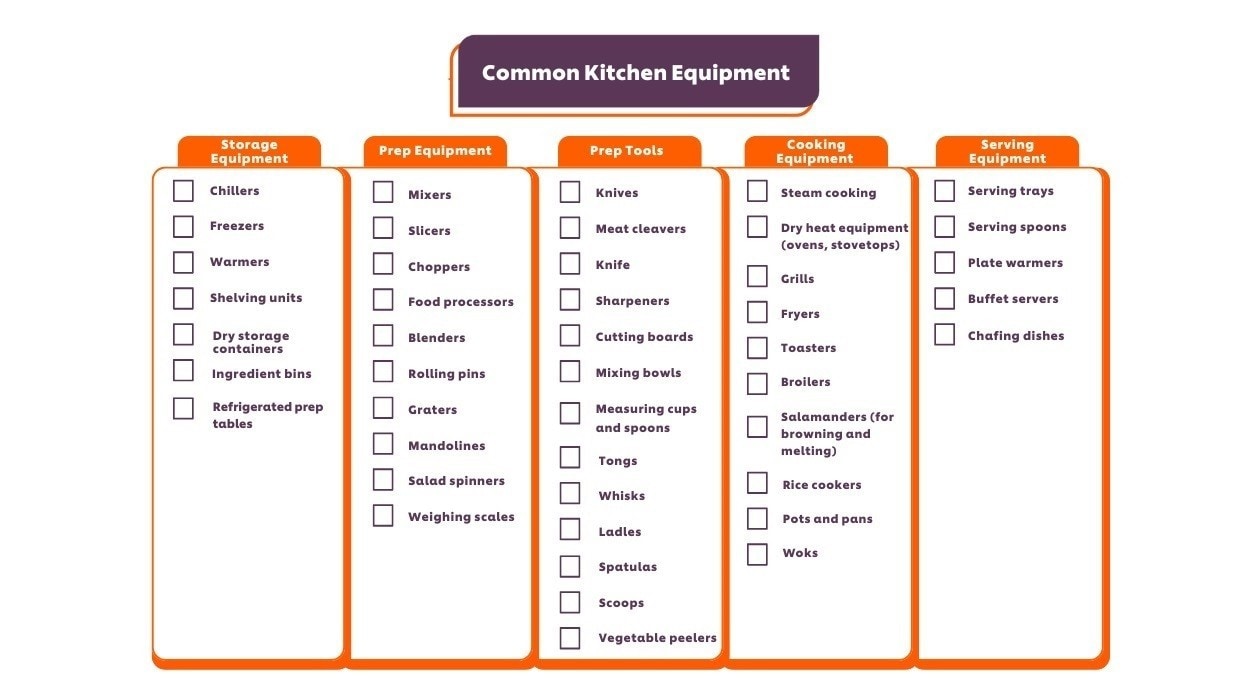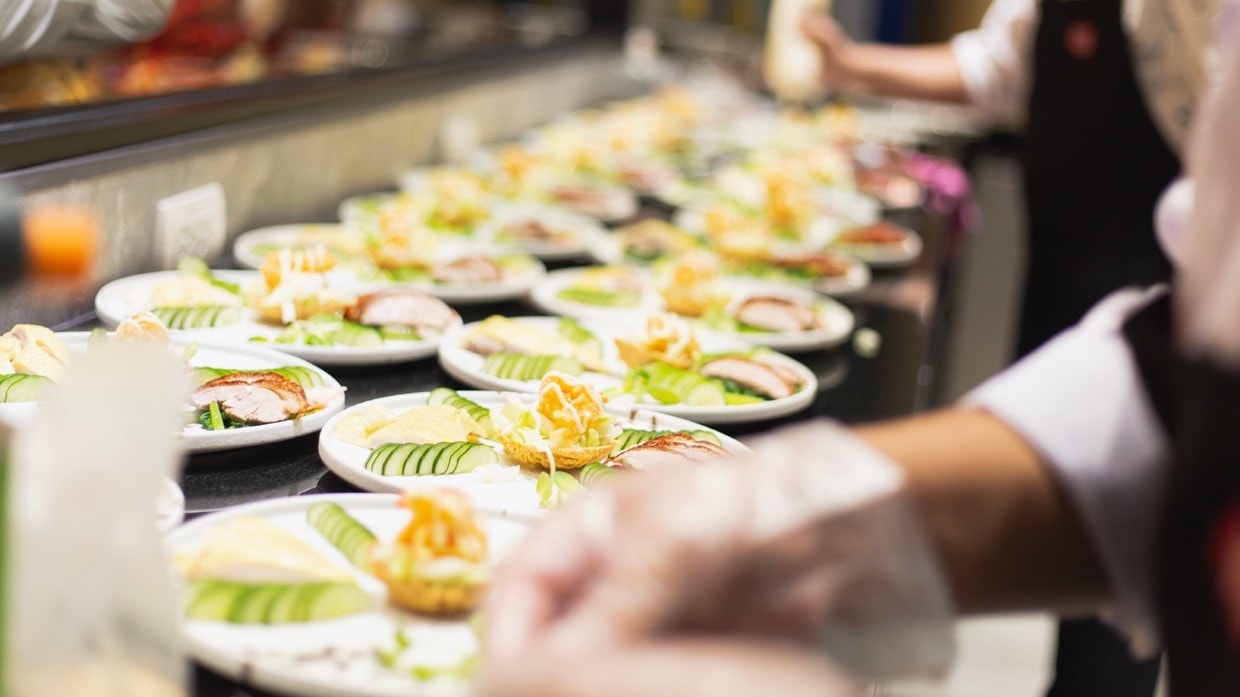The Fundamentals of Kitchen Operations for Every Restaurant
Food preparation principles go beyond cooking; they involve a fundamental understanding of kitchen operations. Enhance your culinary knowledge today!
Running a food business is no small feat; challenges can mushroom daily and quickly escalate. To keep efficiency high and quality top-notch, you need to straighten out your kitchen operations. This guide gives you the necessary insights to master your culinary space, covering organization, equipment, layout, management duties, and more. With this know-how, you’ll navigate challenges like a pro! Ready to turn your kitchen into a well-oiled machine?
What Are Kitchen Operations?

The term refers to the comprehensive management of a kitchen. This involves a variety of tasks, including organizing your staff to create an efficient workflow and ensuring everyone understands their responsibilities. Familiarity with essential equipment for storage, preparation, and cooking is also vital, as it allows for smooth operation and high-quality food production. Additionally, operations encompass implementing time-saving techniques and innovative processes to enhance productivity, streamline communication, and reduce waste.
Kitchen Departments and Organization

The kitchen organization chart outlines various departments and roles in hotel and restaurant operations. Some of these positions may not apply to smaller establishments, but understanding this structure can help you create a system tailored to your business. By keeping this chart in mind, you’ll deepen your understanding of kitchen departments and facilitate smooth operations management in the long term.
The kitchen typically comprises the following roles:
- Executive chef (chef de cuisine or chief cook): The leader of the kitchen, responsible for overall operations and menu development.
- Sous chef: The right hand of the chef, overseeing the kitchen staff and ensuring menu preparation at various stations.
- Kitchen Manager: Oversees the day-to-day operations of the kitchen, ensuring efficient workflow, managing staff schedules, and handling administrative tasks. They act as a bridge between the culinary team and upper management.
- Pastry chef: Specializes in baked goods and desserts, often working in a separate pastry or cold area.
- Butcher: Handles meat preparation and butchering requirements.
- Chef steward: Manages kitchen cleanliness and sanitation, supported by the steward.
- Banquet chef: Oversees banquet functions and large events.
- Garde manger: Responsible for cold food preparations.
- Chef de partie: A station chef responsible for managing a specific kitchen area (grill, sauté, or pastry) and supervising line cooks at their station.
- Line cook: Responsible for cooking and assembling dishes at specific stations during service.
- Pantry manager: Oversees the inventory and organization of dry goods and stored items.
- Assistant chef (commis): Aids in food preparation across different stations.
Kitchen Management Duties

Among these roles, the kitchen manager is at the helm of overall operations, ensuring seamless functionality. Their responsibilities extend beyond cooking, including the following:
- Manages staff, including hiring, training, and scheduling personnel.
- Controls inventory by monitoring stock levels and managing orders.
- Oversees cost management, implementing food costing strategies to maximize profitability and reduce waste.
- Guarantees high standards of quality and safety, ensuring every dish meets set standards.
- Develops menu planning strategies that align with customer preferences and business goals.
Essential Skills for a Kitchen Manager
To thrive in kitchen management, these skills are necessary:
- Leadership: Inspires and guides staff toward greater efficiency.
- Innovation: Plays a key role in crafting creative menus and unique presentations.
- Level-headedness: Stays calm under pressure, making sound decisions during busy shifts.
- Problem-solving: Quickly addresses unexpected challenges to ensure smooth operations.
- Time management: Prioritizes tasks effectively and coordinates schedules seamlessly.
- Excellent communication: Conveys expectations clearly and fosters open dialogue.
Common Kitchen Equipment

Apart from knowing the roles of different people in the kitchen, you should also be familiar with essential equipment. These can be categorized into three main types: storage, production, and cooking.
1. Storage equipment
- Chillers: Store perishable items that don’t require freezing, such as vegetables.
- Freezers: Preserve items like frozen meats to extend shelf life.
- Warmers: Temporarily hold finished dishes until ready to serve.
2. Production equipment
- Mixers: Blend large batches of solid ingredients, ideal for cakes, pastries, and ground meats. Available in tabletop and floor models, mixers come with attachments like paddles for mixing and whisks for whipping.
- Slicers: Slice meats and baked goods, ensuring uniform portions and consistent presentation.
- Choppers: Speed up food prep by replacing manual chopping; includes food processors.
3. Cooking equipment
- Steam cooking: Includes kettles and steamers that use steam as a cooking method, along with combination cookers and microwave ovens.
- Dry heat equipment: Relies on dry heat for cooking techniques like baking, roasting, and sautéing; includes ovens and stovetops.
- Grills: Employs open flames to add a smoky flavor to food.
- Fryers: Use hot oil to create crispy textures and rich flavors.
Exploring Kitchen Layouts
An optimal kitchen layout ensures efficient workflow. Here are several kitchen types tailored to specific equipment, stations, and logistical needs:
- Quick service restaurant: Prioritizes speed and high-volume activity.
- Hotel food service: Features large kitchens for banquet service, often with satellite kitchens.
- Hospital kitchen: Requires the highest sanitation standards.
- Mid-scale restaurant: A medium-sized operation resembling hotel kitchen stations.
- In-flight food service kitchen: Operates continuously, usually near airports.
- Cruise ship kitchen: Equipped with large storage units for long-term food supplies.
Kitchen Layout Flow

The layout should flow as such:
- The receiving and storage areas should be close together to streamline inventory management.
- The mise en place and production areas should be located next to the storage for easy access to ingredients.
- The plating and pick-up areas should be near the dining room to facilitate quick food service.
Criteria for a Well-Designed Kitchen
A well-designed kitchen supports efficient operations and enhances productivity. Consider the following criteria when planning the layout:
- Clear division of work areas
- Smooth traffic flow
- Compliance with hygiene standards
- Equipment selection
- Capacity assessment
- Purchasing system
Mastering kitchen operations is a cornerstone of success in any food business. This guide equips you to refine management practices, streamline workflows, and enhance guest experiences. Keep it handy for quick refreshers on essential kitchen concepts, ensuring your team delivers excellence consistently.
Related Articles
Related Products
Product added to list
Unable to add product to list
Product removed from list
Unable to remove product from list
What you'll get:
- Access to free Chef trainings
- The best recipes and tips from Chefs around the world
- The latest culinary trends








